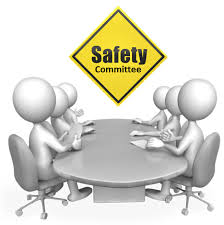Creating a Safety Program

CREATING A SAFETY PROGRAM
By Bill Giorgis
One of the best ways to protect tow truck operators and drivers while on duty is by launching a safety program to raise awareness of job-related dangers and ways they can protect themselves and prevent accidents. Having a safety program is good for drivers because it builds morale as employees share experiences, anecdotes and tips. It’s also good for the company because, know it or not, companies and drivers are being monitored – by insurance carriers, motor carrier enforcement, and federal, state and local transportation agencies. There is no worse call or visit to make than to a loved one when a tow truck operator or driver dies or is injured while performing their duties. Plus, an accidental work death automatically launches an Occupational Safety and Hazard Administration (OSHA) investigation of your company’s work and safety practices.
A BETTER WAY TO GO
A better way to go is to invest in the safety of your workers. A safety program helps:
• Prevent loss of life or injury
• Promote good morale
• Return real dividends
• Save money
• Potentially lead to more business
Starting a safety program can be as easy as signing up for TowSafe, a low-cost safety program by Tow Times that teaches workplace safety for the roadside, in the office or shop based on the magazine’s “Safety Meeting” column. Check TowSafeprogram.com for details. Plus, several towing industry experts provide safety courses and technical training for industry workers. They range from WreckMaster levels 1 to 9 to the International Institute of Towing & Recovery managed by Peter Fuerst and the American Towing and Recovery Institute with Wes Wilburn at the helm, among others. Also check the safety courses and videos offered by the Towing and Recovery Association of America (TRAA) or your state towing association. Most insurance companies also provide safety guidance and, in the interest of keeping claims costs down, they often give free training at tow shows.
SAFETY MEETINGS
Other avenues for improving safety include holding your own workplace safety meetings in which employees and owners discuss close calls, answer questions, discuss company policies – and help change bad job attitudes and practices. Be sure to set a regular monthly date for the safety meeting so employees know what to expect. Companies may want to designate a safety manager who is the go-to person in charge of answering safety concerns as well as conducting the meetings. Topics to discuss include being aware of what towing companies and workers can and cannot control. For instance, companies can control training, personal protective equipment (PPE) and employee attitudes. However, they cannot control environmental conditions, D drivers (drunk, drugged, drowsy, distracted or just plain dumb), and the location and timing of tow calls.
BE VISIBLE
At minimum, instruct tow employees who work roadside to wear high-visibility safety vests, as defined by the American National Standards Institute (ANSI). The required safety vest is based on highway speed. ANSI 1 is for working on highways with speeds not exceeding 25 miles per hour, while ANSI 2 vests are used on roadways with speeds between 25 and 50 mph. ANSI 3 vests are for use on highways with speeds over 50 mph. Vests should be lime green, orange or red (considered fluorescent). The regulation warns that adding reflective striping to existing garments is not ANSI compliant. Other clothing issues to be discussed include long or short pants, work boots or shoes, hard hat or cap, gloves or no gloves, safety glasses or goggles?
STRESS MANAGEMENT
Another potential topic for discussion is how to handle internal distractions such as home, family and bills. These can take drivers’ attention or focus away from the task at hand. Retaining situational awareness is important for monitoring, adapting and responding to changing conditions on the ground. Consider conducting special classes on stress management and financial management, knowledge of which is sorely lacking among today’s workforce, educators say. Be flexible in scheduling work hours to keep stress levels down. And be aware of workers who may need special help, as in employee assistance. In fact, these and other topics fit neatly into an employee handbook, which provides guidance to workers on correct company policies and procedures to follow. If your company doesn’t have an employee handbook, you should consider writing one.
LEAD BY EXAMPLE
Make a safety program a team effort, not just for towing operators and drivers but also management and dispatch. This way, safety rules from the top down. Managers may want to keep an open-door policy to facilitate communication so they hear of issues before they become costly headaches.
Most important, lead by example. Wear a seatbelt while driving with workers. Don’t text or talk on a cell phone while driving (another topic for discussion and company policy). Be safety focused-always.
Make safety an important resource in your company tool box. A focus on safety and the situations that detract from safety help maintain a positive work environment. A company that builds a workplace culture based on safety will reap the rewards and benefits.
DRESS FOR SUCCESS
• ANSI 1 – For use on roads with speeds under 25 mph. Must be either a fluorescent yellow or orange with a minimum of 155 sq. in. of reflective tape around the middle of the vest as well as over the shoulder.
• ANSI 2 – For working in speed zones between 25 and 50 mph. Must have at least 775 sq. in. of fluorescent yellow or orange material and 201 sq. in. of reflective striping.
• ANSI 3 – For use on highways with 50 mph or higher. It requires the most background fabric and reflective striping, 1,240 sq. in. of fluorescent yellow or orange material and 310 sq. in. of reflective striping.
Source: workzonesafety.org
